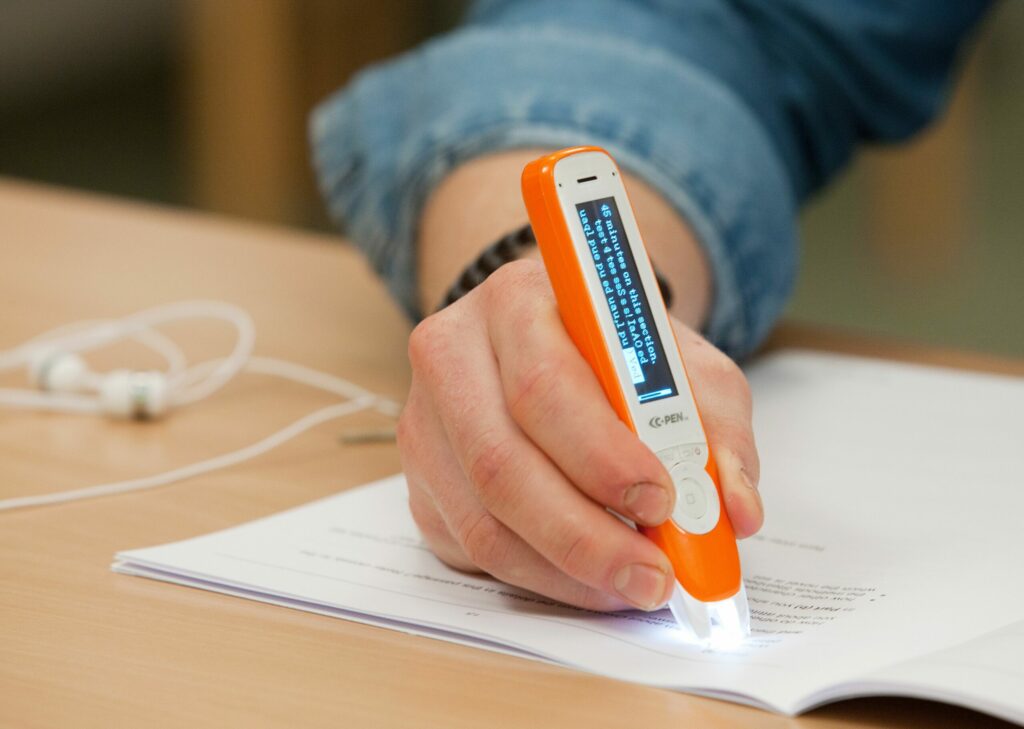
Assistive technology for dyslexia
5 to 17 percent of us have limited reading abilities due to dyslexia. Assistive technology for reading and writing has in regards to this quickly become a vital aid in workplaces and classrooms. With software, hardware or devices dyslexic persons can reach independence and productivity like any other. Even students and workers who have physical limitations such as sight issues or blindness can benefit from the wide range of apps and websites available today.
Writing and reading with assistive technology
There are supportive tools for students with dyslexia in form of assistive technology for reading and writing. It saves time and overcomes issues, like slow note-taking and unreadable handwriting. However, dyslexia isn’t just a condition that schools should be aware of. Under the 2010 Equality act in the UK, employers are now by law required to make workplace adjustments for their employees with disabilities and health issues. In other words, implement assistive technology for reading and writing where workers with dyslexia need it to manage their job. Under the headings below you’ll find screen readers, text-to-speech tools and other examples of assistive technology for dyslexia. The ones mentioned are suitable for people of all ages and situation – in school, at work or at home.

Speech recognition software – lets users dictate or talk to a computer using software to convert speech to text. This assistive technology for dyslexia is suitable for spelling or writing emails, reports and so on.
Text-to-speech software – the other way around, where you can understand written material by listening to it. With this assistive technology for reading, you can proof-read and check your work. Balabolka for example is good and free software.
Mind mapping software – specially designed to let dyslexics plan their work easier and more effectively.
Optical character recognition – assistive technology for reading that allows you to scan printed material into a computer or handheld unit such as the reading pen from C-PEN. This pocket-sized, portable device reads text aloud with an American English, British English, French and Spanish human-like, digital voice. The pen has embedded first-tier junior and academic dictionaries and is compatible with both Mac, PC and Linux – no software needed.
Software extensions to web browsers – for example, the cloud-based and free software Grammarly. This assistive technology for dyslexia spell-checks words that regularly flummoxes MS Word and Google. Based on its AI-system it mimics a human solving a task.

Assistive technology for dyslexia at school
The assistive technology for reading and writing above can of course also be used in schools. More suitable assistive technology for dyslexic students might be:
Audiobooks & publications – recorded books available in audiocassettes, CDs and MP3 downloads. Units and apps let you search and bookmark pages and chapters. There are also subscription services that offer electronic library collections.
Paper-based computer pen – this assistive technology for reading and writing records audio (e.g., a teacher) and links it to what the user writes with the pen on a special paper. Afterwards, you can listen to any section of your notes by touching the pen to the handwriting. This might help people struggling with writing, listening, memorizing and reading.
OCR technology – like C-PEN ExamReader™, a reading pen for exam approved by The Joint Council for Qualifications (JCQ)* for use in exams (UK). This form of assistive technology for dyslexic students, students with reading difficulties or students with English as a second language lets them be with their peers in the main exam hall.
